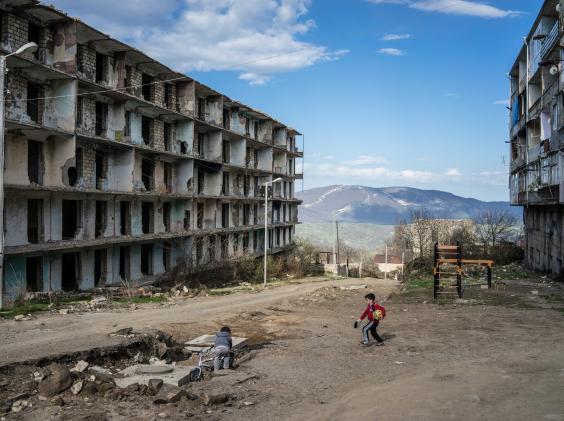Aghdam in Nagorno Karabakh: the World’s most Dehumanised City?
The troubled region of Nagorno-Karabakh has had a turbulent recent past, and while the fighting may have finished with a Russian-brokered ceasefire in 1994, there is still no lasting peace. As with any conflict, there are victims on both sides, including the town of Aghdam, ethically Azeri, but controlled by the Armenians. Due to its strategic location, the Armenians were keen to ensure it did not become a launching pad for an offensive. What follows is a traveller’s impressions several years after the conflict, with no judgment either side, merely incredulity at how a thriving metropolis can be reduced to nothing.

Our driver suggested that we visit Aghdam, a town of 50,000 Azeri inhabitants in Azerbaijan before the war. I had heard of this town, that the Armenians had taken it during the war and, in order to avoid the possibility that it would be retaken and used as a launching pad to attack the capital, they destroyed it. And when I say destroyed, I mean destroyed. In this former town of 50,000 people we saw fifteen civilians (a mother and two sons were picking berries, which were growing wild in the main street; an elderly couple with granddaughter were foraging for firewood; the others were collecting scrap metal).
Fifty thousand inhabitants – only one roof
In this town of fifty thousand inhabitants, only one roof was spared. The mosque was apparently spared because the Christian Armenian soldiers who destroyed Aghdam recognised it as a holy place and therefore respected it. It was clear from the view from the minaret that they respected little else. At first sight, it appeared almost as though we were looking at some ancient historical ruins, overgrown with trees and other shrubbery. Birds were singing and butterflies floating; half a dozen cows were idly munching on some thistles in what might have been someone’s living room less than ten years before.
The mosque in Aghdam
The mosque, which had been spared due to its holy status, was covered in graffiti, mostly in Armenian, but we could make out the odd word in Russian – Yerevan, Armenia. The floor was covered in dirt, cow excrement, fresh cow excrement covered in flies, which moved on as we approached. The thing that struck us both when we spoke about it over dinner – we were quiet and lost in our own thoughts until then – was the depersonalised nature of Aghdam. Nothing but the mosque was recognisable, no major buildings. Not only the roofs, but most of the walls had been reduced to rubble. A city of fifty thousand. Razed. On one broken gate I saw the number 50. House number fifty, but which street? No other identification was evident. Even the roads had been dug up and all the pipes removed.
This is what left the lasting impression, the sheer depersonalised and utterly abandoned nature of the town. Had one not known about the recent history, it would be easy, it would have been easy to visualise that Aghdam had been like this for more than a century.




